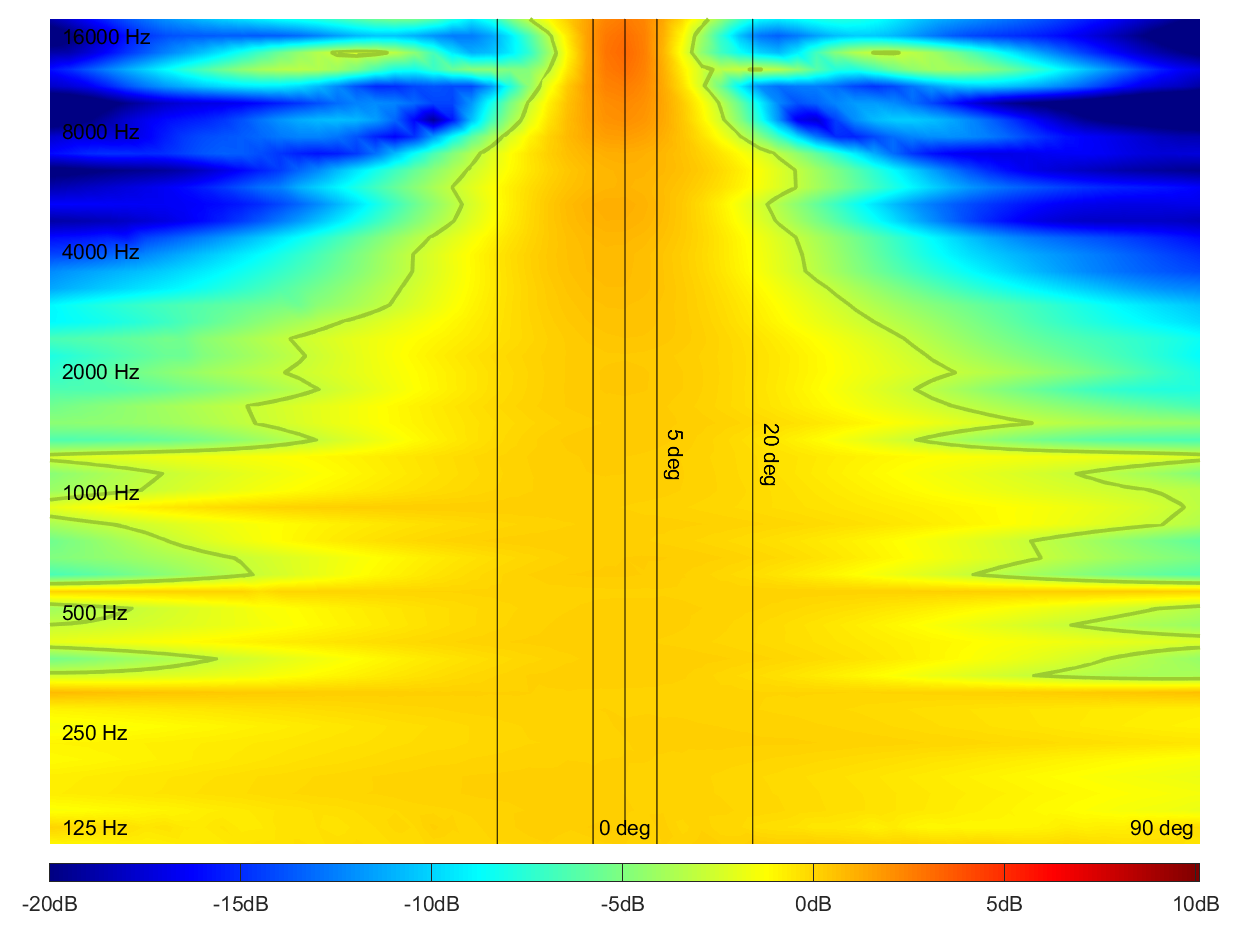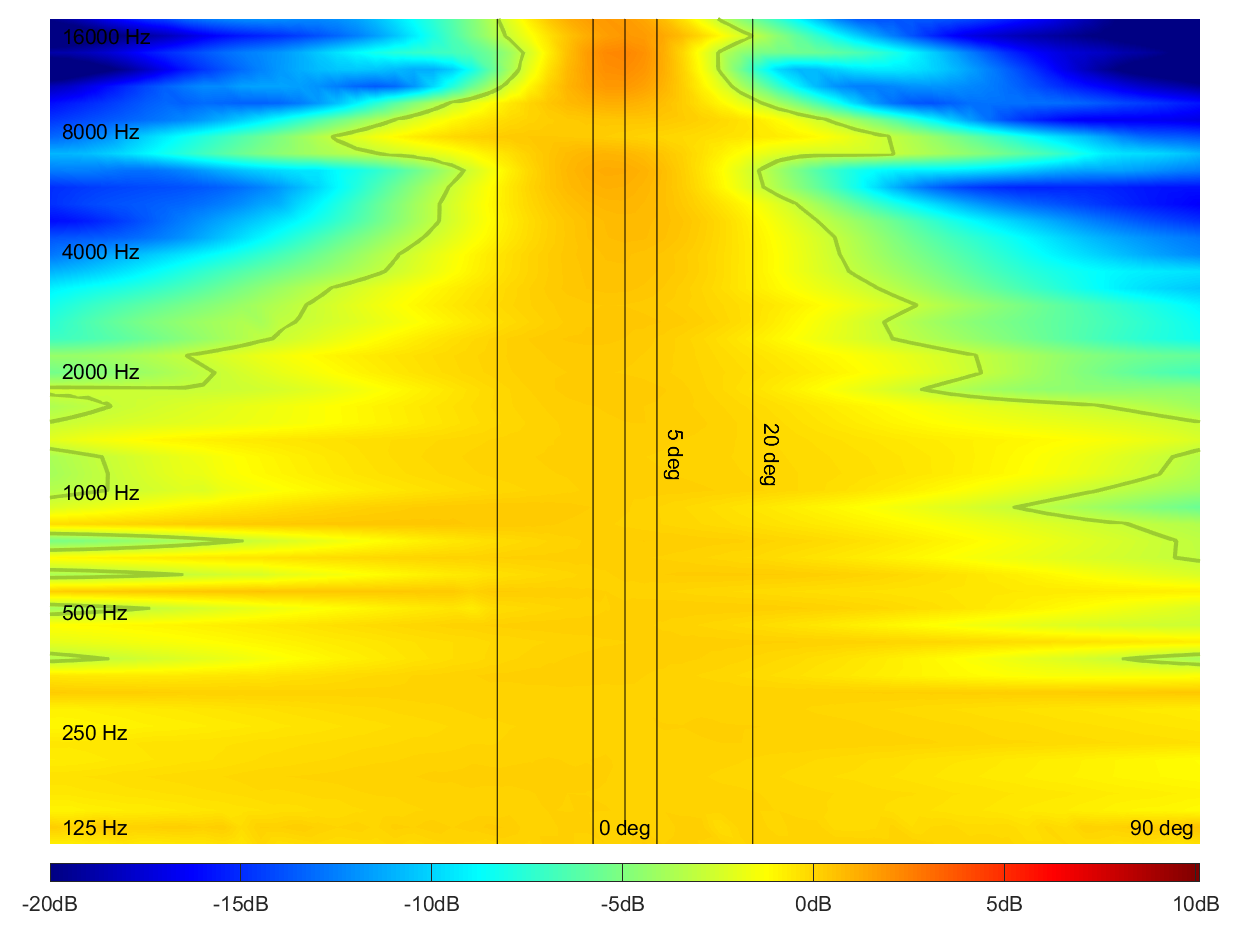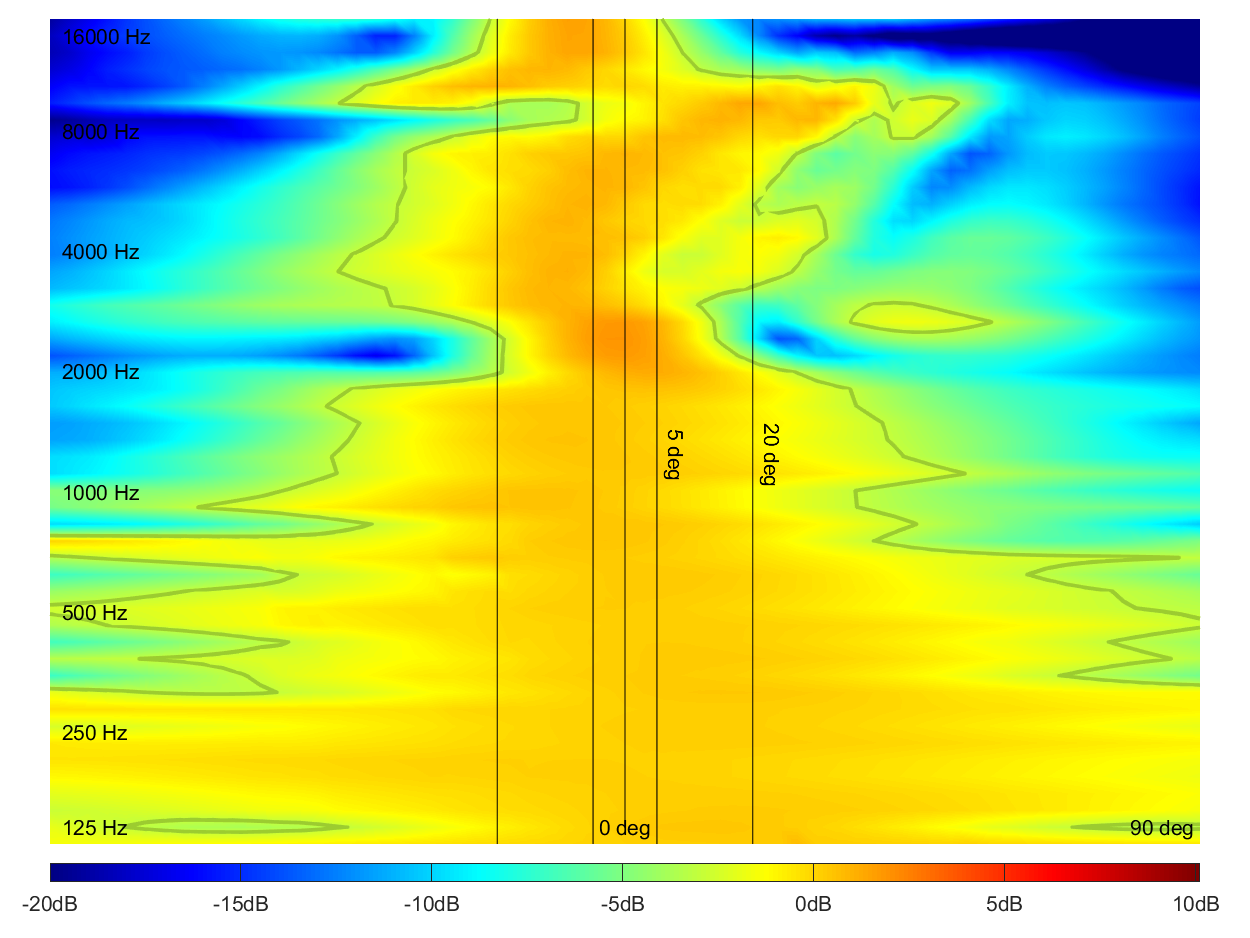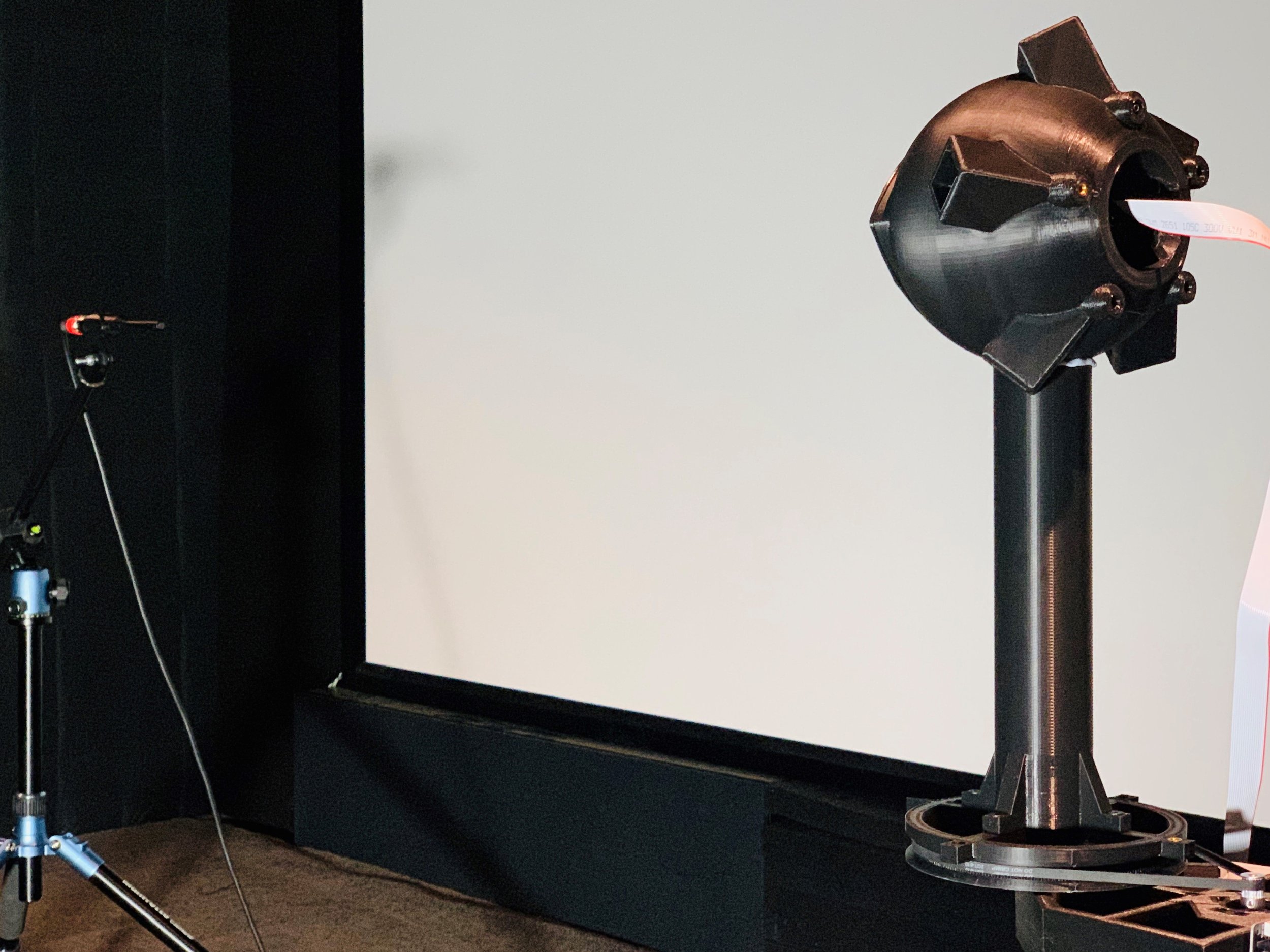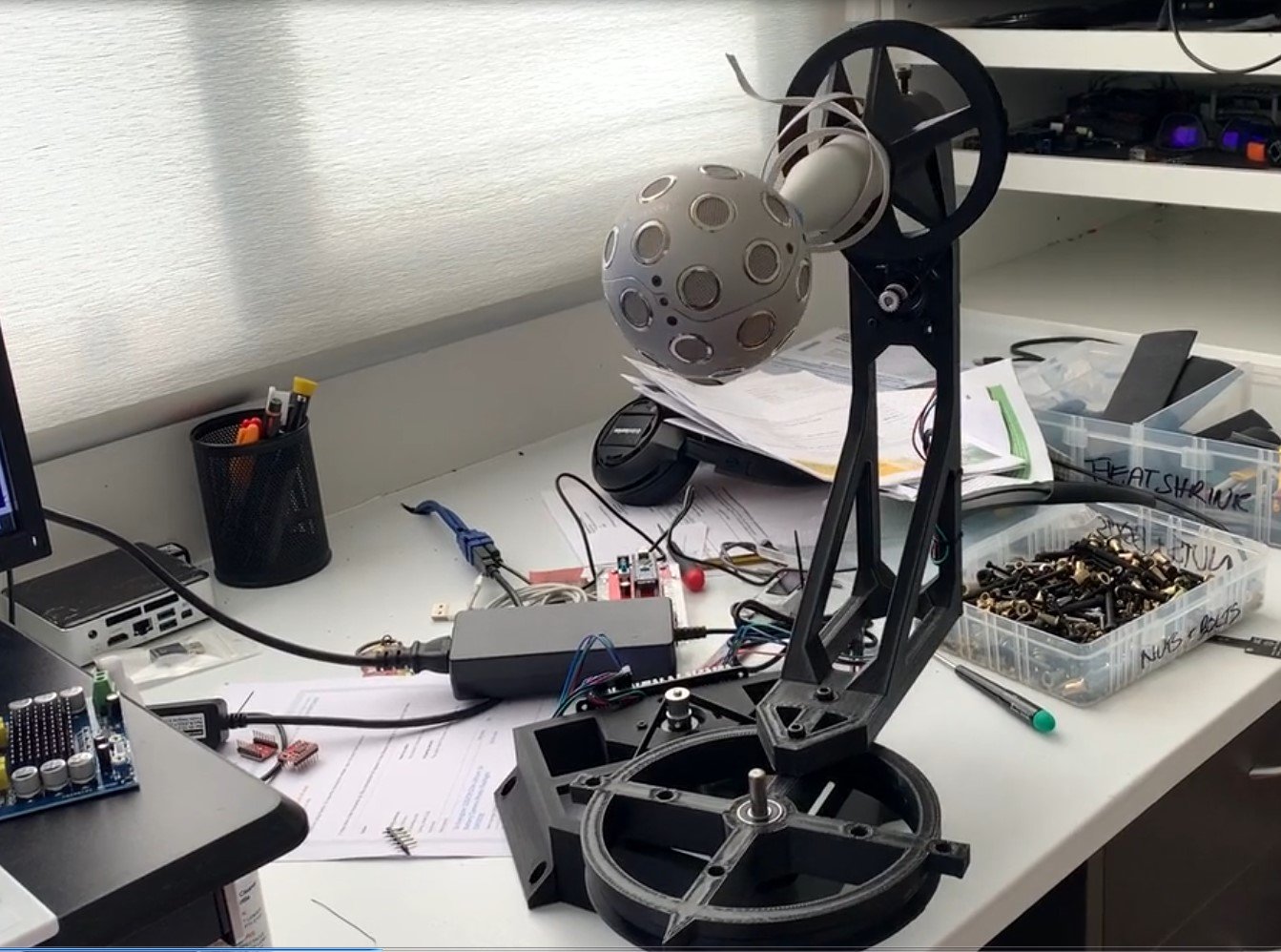Is a speaker a point source?
Those who work with real speakers to achieve high impact and consistent sound delivery know for sure this is not true. However, in the majority of academic work on spatial sound, the assumption of a speaker being a point source is endemic. For any system attempting or claiming to be accurate, the polar response of the speakers is an important aspect. At DickinsAudio we have developed low cost tools for very precise measurements of the responses of our speakers. These are all available on request with discussions or purchase of a system. We can also provide consultancy or custom service for measurement and calibration of your own speakers.
Below are some example polar plots from speakers typical of that used in the arrays compared with a reference JBL6325 two way monitor. The first two DickinsAudio speakers are spherical with a single driver and diameter 200mm, 120mm. The third speaker is a two way book shelf sized rectangular prism. The color scale is normalized for the on-axis response at each frequency. Both positive and negative angles are measured, so the symmetry seen (or deviation from ) is indicative od speaker axial symmetry. Generally we prefer the use of a single driver in order to achieve an axially symmetric response.
Contours shown are at 1dB and 3dB. This corresponds to speaker contribution signal to error ratio of 20dB and 10dB respectively, for the case of constructive phase-aligned sound field techniques. The vertical lines are useful as a guide. For a 1800mm array, 5 degrees corresponds to approximately 75mm radius – the size of a head!
Some interesting comments and conclusions we can draw from data like this:-
The first order calibration process we apply to our current shipping arrays is effective (~1dB) for reasonably operating areas to suit a listener across a wide frequency range.
This data suggests that for precise soundfield work, the continued development, release and application of new calibration approaches will add value and have continual improvement to your array.
Speakers are quite different to the model of a point source, which is used in almost all academic models and soundfield approaches. A point source would have no change in response with angle.
Two way monitors can create substantial spatial variations at the cross over point.
The data highlights the three orders of magnitude of geometry and challenges involved in the acoustic bubble, and points to use of hybrid approaches blending statistical volumetric (LF), calibrated phase soundfield (MF), and intensity (HF) as adopted in DickinsAudio full inversion solutions.
Speakers are not ideal, but they are good enough to work with and achieve many goals. Current academic trends are lacking speaker models and this is a limiting factor of soundfield precision. It would be fair to say that any system based on the assumption of point source speakers would struggle to implement 10-20dB spatial SNR even for the theoretic channel count (N=(kR+1)^2).
Collaborative work with Dolby and the Australian National University is creating comprehensive data sets from real arrays to further investigate and develop solutions to this problem. We are inviting other researches to access the data and take on the challenge of volumetric callibration. Whilst it may not matter for the joy of listening to your array, it does matter to some of our users where arrays have to meet precise standards of accuracy and repeatability.


